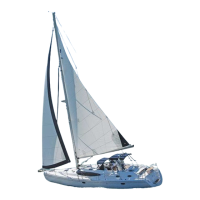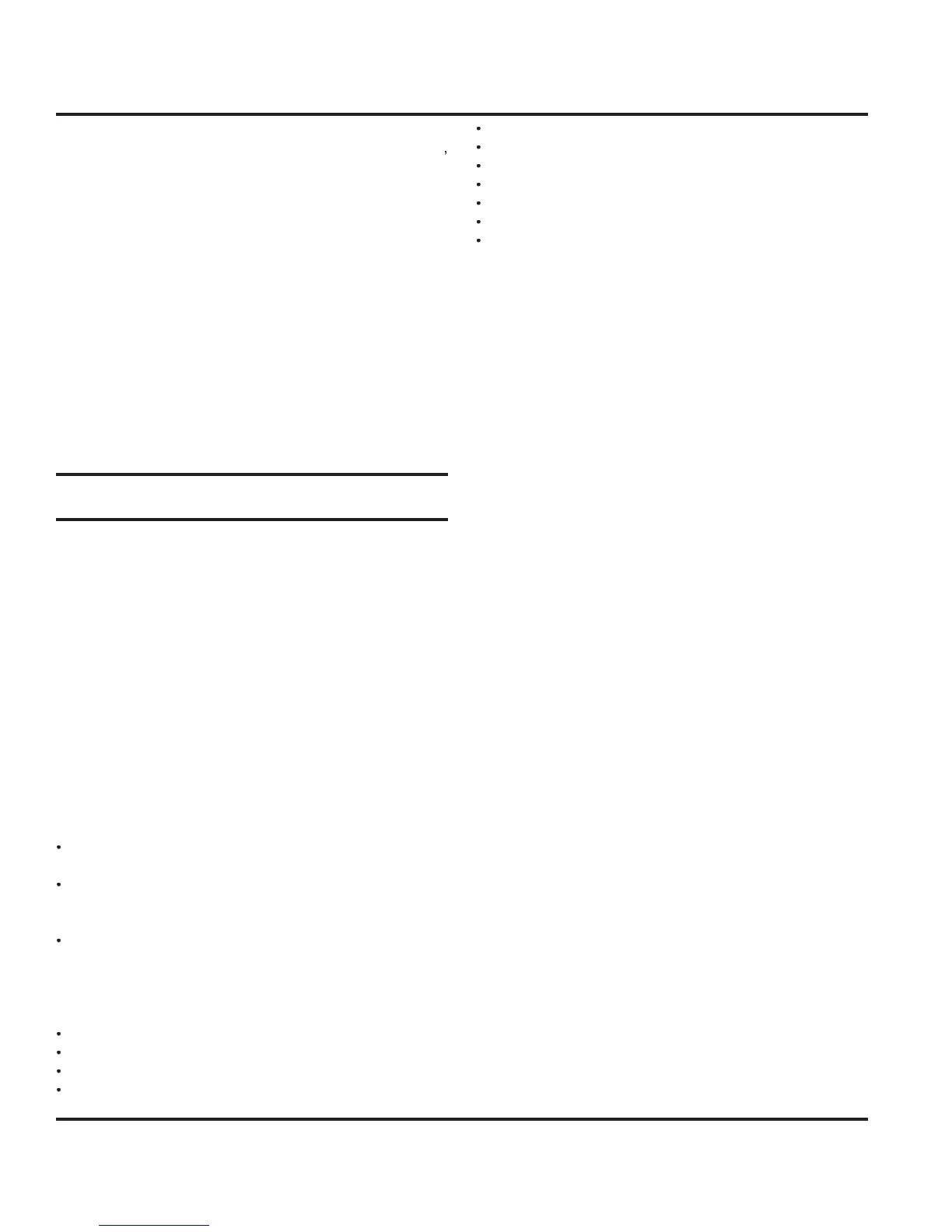nt
r
• Sails and Ri
in
12.
— the laz
sheet — should also be attached to the clew
f the s
innaker , led forward
n front of the headsta
n
th
n
k
n th
th
r
i
th
t —
t
i
the shrouds and li
elines — to another turnin
block
positioned
ust forward of the stern pulpit. Then take that
sheet and lead it to a winch, with the slack in the sheet.
Now
ou are read
to hoist the spinnaker.
tart b
headin
off to a square run. Leave the mainsail full
ut durin
the hoistin
procedure as it will blanket
the spinnaker and keep it
rom
illin
until
ou are
read
for it to be set. A
ood place to raise the sail
is
rom the leeward side,
ust ahead o
the boom.
nce it is
ull
hoisted, slowl
head up to
our desired
ourse an
u
n t
e s
eet unt
t
e sa
sets.
a
e
sure
ou have at least two turns o
the sheet around the
win
h.
Now
ou are o
and sailin
with
our cruisin
spinnaker.
12.9 The Arch
As is customar
on Hunters, the traveler is overhead, on
a stainless-steel arch, to keep the cockpit clear of the
bstruction and the boom clear of
our head. The helms-
man can easil
ad
ust the mainsheet traveler and the
ib
sheets, althou
h the mainsheet itself is at the companion-
wa
as
ustrate
a
ove.
e setup a
ows s
ort
an
e
sailin
when there are onl
a couple o
people in the
ockpit or with an autopilot doin
the steerin
.
For instructions on
oldin
the arch
or transport or ser-
vice please follow the followin
instructions:
Ar
h in
t
ll
ti
n n
t
n
t
l li
t
Notes: Read all of the installation instructions before begin-
ning.
s
o
requ
res two peop
e,
t
s
mportant t
at t
e
arch be supported until
irml
attached to the deck.
To avoid in
ur
durin
the installation process, orient
t
e arc
pr
or to
e
nn
n
t
e
nsta
at
on
m
m
r t
h
k
ll
r
h n
t
lt
t
r th
initi
l
seatr
a
an
t
ten as necessar
T
l Li
t
r
r
h in
t
ll
ti
n
rill and 3
8” drill bit, to clear sealant
rom holes.
” drive ratche
extensio
16” deep and re
ular socket.
1
” wrenc
hillips head screwdriver
lar
e: P4
aulk
un, and sealant
3M-5200
Never
eize” bolt lub
z
r knif
wire strippers
crimps
ra
s, and acetone, or lacquer thinner
or clean-up
Struts
not fitted to all models or mast options
50 B&R Ri
With Struts Descriptio
The B
R ri
, utilized on the Hunter 50, eliminates the
need for a backsta
to allow for a more efficient mainsail
shape. Fixed backsta
s are commonl
bein
desi
ned
ut o
toda
’s per
ormance-oriented boats to allow the
mainsail to incorporate a full roach desi
n - a more
aerod
namic shape both
or racin
and cruisin
per
or-
To accomplish this, the B
R ri
has 30 de
ree swept
spreaders, creatin
120 de
rees between each ri
in
po
nt.
s tr
-po
arran
ement
as exce
ent stren
t
or sailboat ri
s, and has been used
or
ears to support
hu
e radio towers
Additional support is
iven to the B
R ri
and is unique
to it
with the addition o
reverse dia
onal ri
in
. For
xamp
e, t
e
a
ona
s t
at
ou see
e
nn
n
t
e
top o
the mast strut, endin
at the tip o
the spreader,
supports and stabilizes the upper section o
the mast as
t creates a tr
an
e w
t
t
e upper s
rou
The B
R ri
is desi
ned to be pre-bent to
urther add
ri
idit
to the mast section and eliminate the need for
ad
ustable ri
in
like backsta
ad
usters
. This desi
n
should prove more reliable than a ri
with ad
ustable
backsta
s or runners, as there is less chance for error
The lar
e main, small
ib, sail plan on the 50 also elimi-
nates the need for lar
e overlappin
headsails
enoas
,
as the drivin
power comes
rom the much improved
shape and size o
the mainsail. This o
ers an easier
tackin
small
ib, creatin
ood performance and more
om
ortable sailin
as it is less work
or the crew.
s t
e
ar
e ma
n
s creat
n
a
t
ona
ma
ns
eet an
leach loadin
, Hunter has included a cockpit arch whereb
the mainsheet and leech loads are directed to the stron
part of the boom
the out-board end
and is located at the
heaviest loadin
point o
the mainsail. The cockpit arch
serves additional sa
et
and com
ort
unctions as hand-
o
s an
coc
p
t canvas attac
ment po
nts.

